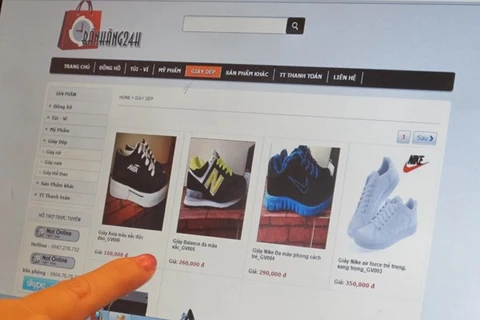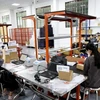Vietnamese exporters have not used websites effectively for their operations, while small and medium-sized enterprises (SMEs) have made full use of e-commerce.
The results of a study on the Internet, e-commerce and SMEs activities in Vietnam, released in Hanoi on October 29, showed that the Internet has not ensured higher value for all sectors, while the number of computers have considerably contributed to SMEs' operations.
The study conducted by the Central Institute for Economic Management (CIEM), the Institute of Regional Sustainable Development (IRSD) and Vietnam E-commerce Association (VECOM), and sponsored by tech giant Google, also said the Internet has helped to increase turnover and profits rapidly with the application of technology, especially in SMEs.
In addition, the Internet has also sharply reduced transaction costs and has created a level playing field for businesses.
Tran Kim Chung, CIEM Deputy Director, said he was not surprised with the results as in reality, the Internet and IT played a vital role for businesses.
"Enterprises should take advantage of the Internet to develop, while modernising the economy," Chung said.
Alex Long, country lead, government affairs and public policy, Google Asia Pacific, said the Internet could contribute great value to an economy. Vietnamese businesses could utilise the Internet to cut costs, expand their markets and improve labour productivity.
He said Google wanted to co-operate with Vietnam in helping its businesses to fully utilise the potential of the Internet.
Statistics from the industry and trade ministry's Vietnam E-commerce and Information Technology Agency (Vecita) have revealed that with up to 40 percent of its people using the Internet, Vietnam is one of the fastest growing economies in terms of Internet users.
The country's e-commerce has been growing and providing potential as well as development opportunities to SMEs.
The e-commerce turnover reached 2.2 billion USD in 2013, and is expected to touch 4 billion USD this year.
SMEs can expand their promotion, access international markets and reduce intermediate segments.
However, SMEs have also faced difficulties, especially tax issues. Businesses have had to pay about 20 percent of their turnover for e-commerce services, excluding online advertisements.
The issue of brand protection has also been a headache for enterprises as a large number of copyright violations are occurring in the country.
The study suggested that the Government should provide a more favourable legal environment to the markets' development, both in Internet services and safe e-commerce transactions.-VNA






















